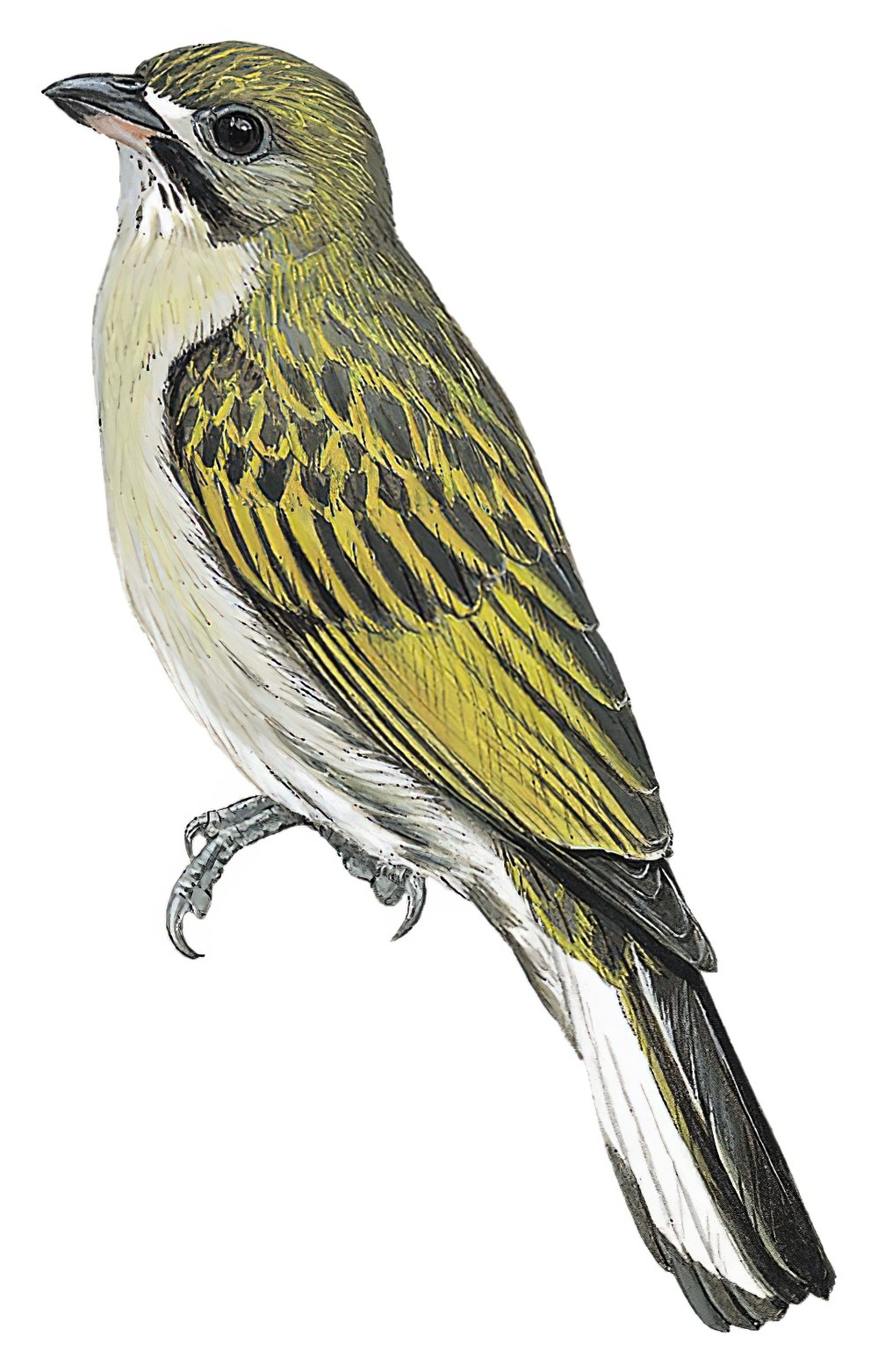Thick-billed Honeyguide / Indicator conirostris

Thick-billed Honeyguide
SCI Name:
Protonym: Melignothes conirostris Proc.Acad.Nat.Sci.Philadelphia 8 p.156
Taxonomy: Piciformes / Indicatoridae / Indicator
Taxonomy Code: thbhon1
Type Locality: Moonda River, Gaboon.
Author: Cassin
Publish Year: 1856
IUCN Status:
DEFINITIONS
INDICATOR
(Indicatoridae; Ϯ Greater Honeyguide I. indicator) L. indicator, indicatoris guide, one that points out < indicare to show < index, indicis sign, informer < in among; dicere to tell (cf. specific name Cuculus indicator Sparrman, 1777); "The Dutch settlers thereabouts have given this bird the name of Honiguyzer, or Honey-guide, from its quality of discovering wild honey to travellers ... Not only the Dutch and Hottentots, but likewise a species of quadruped named Ratel (probably a new species of Badger), are frequently conducted to wild bee-hives by this bird, which, as it were, pilots them to the very spot. The honey being its favourite food, its own interest prompts it to be instrumental in robbing the hive, as some scraps are commonly left for its support" (Sparrman in Stephens 1815); "INDICATOR. HONEY-GUIDE ... THE Honey-guides form a very peculiar genus ... the feathers are short, hard, and pressed close to the body: the skin is thick, and the fibres so close that it is difficult to pierce it even with a pin, an admirable provision of nature to guard these birds against the stings of bees, as it forms an almost impenetrable coat of mail. Sparrman first described the Honey-guide, which he placed in the genus Cuculus, to which it is only related in having the toes placed two and two. ... SPARRMAN'S HONEY-GUIDE. (Indicator Sparrmanii.) ... GREAT HONEY-GUIDE. (Indicator major.) ... LITTLE HONEY-GUIDE. (Indicator minor.)" (Stephens 1815); "Indicator Stephens, in Shaw's Gen. Zool., 9, pt. 1, 1815, p. 131. Type, by tautonymy, Indicator Sparrmanii Stephens = Cuculus indicator Sparrman." (Peters 1948, VI, 65). The Greater Honeyguide is well known for leading mammals (especially the Ratel and man) to bees’ nests, enabling the stronger mammal to break open the nests and benefit from the honey, whilst the honeyguide eats the grubs, bees, and wax. Local superstition demands that some token honey is left for the honeyguide, otherwise it will next lead the searcher to stumble upon a hidden leopard or venomous snake.
Synon. Melignostes, Melignothes, Meliphagus, Melipodagus, Morocus, Prodotes, Pseudofringilla, Pseudospiza.
indicator
L. indicator, indicatoris guide, one that points out < indicare to show < index, indicis sign, informer < in among; dicere to tell.
● “Greenish above, greyish below, which with white tail make it look like large honeyguide” (Keith et al. (ed.) 1992) (Baeopogon).
conirostris
L. conus cone; -rostris -billed < rostrum beak.
SUBSPECIES
Thick-billed Honeyguide (ussheri)
SCI Name: Indicator conirostris ussheri
ussheri
Herbert Taylor Ussher (1836-1880) British diplomat at the Gold Coast 1866-1872, Gov. of Labuan, Borneo 1875-1879, Gov. of Gold Coast 1879-1880 (syn. Baeopogon indicator leucurus, Bradornis, Erythropitta, subsp. Indicator minor, subsp. Pholidornis rushiae, Scotopelia, syn. Sylvia borin, subsp. Tchagra australis, Telacanthura).
Thick-billed Honeyguide (conirostris)
SCI Name: Indicator conirostris conirostris
conirostris
L. conus cone; -rostris -billed < rostrum beak.
UPPERCASE: current genus
Uppercase first letter: generic synonym
● and ● See: generic homonyms
lowercase: species and subspecies
●: early names, variants, mispellings
‡: extinct
†: type species
Gr.: ancient Greek
L.: Latin
<: derived from
syn: synonym of
/: separates historical and modern geographic names
ex: based on
TL: type locality
OD: original diagnosis (genus) or original description (species)












